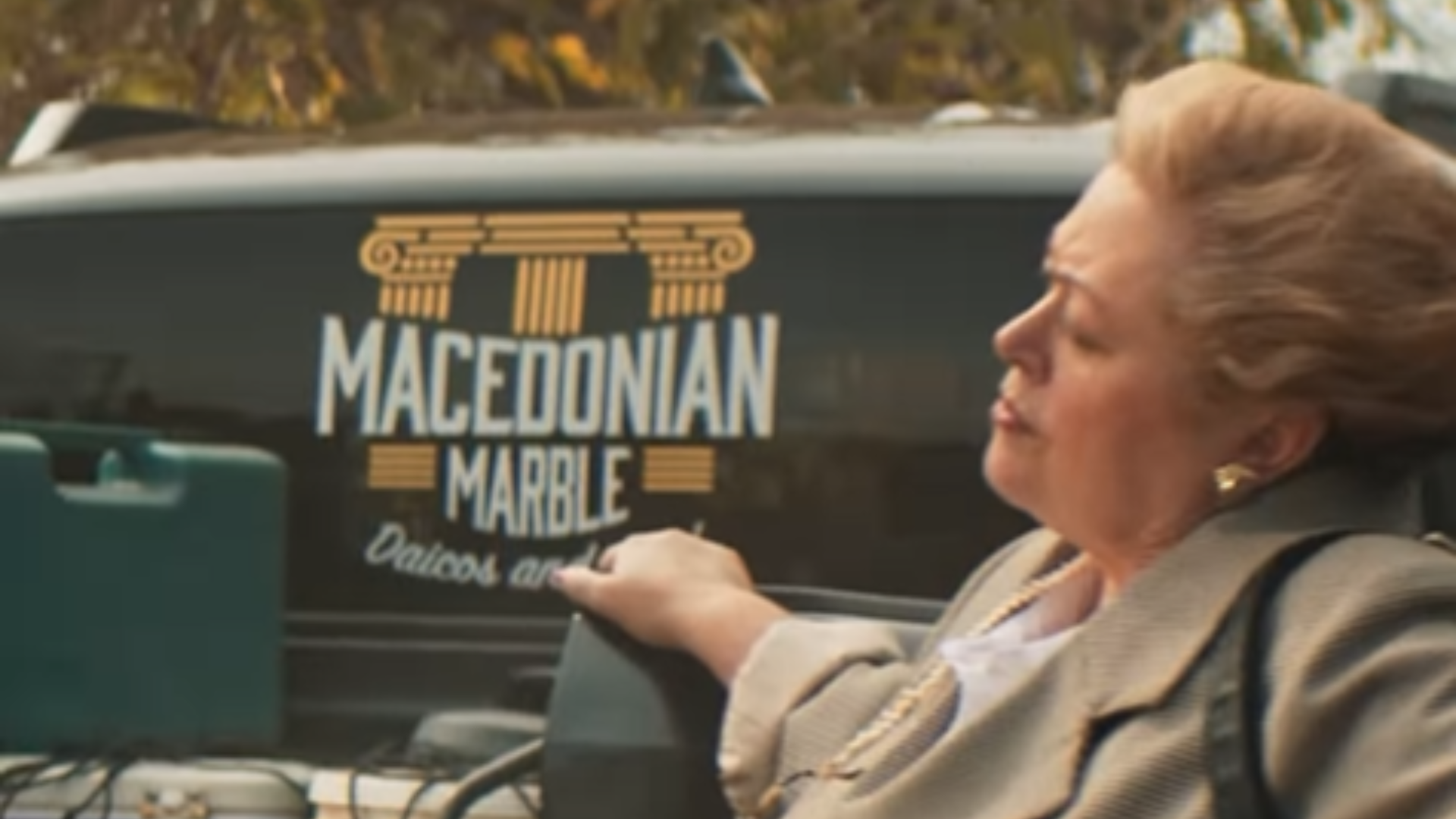Kia Australia has come under fire from members of the Greek Australian community following the release of a new advertisement for its Tasman ute, which features a transport truck branded with the term “Macedonian Marble” alongside Greek-style Parthenon columns.
The ad, which features a line-up of sports stars including Rafael Nadal and Peter Daicos, who identifies as Macedonian, was flagged to The Greek Herald by multiple readers concerned about the blending of Greek cultural symbols with contested terminology.
“It’s disappointing and insensitive,” said Steven, one of many who contacted The Greek Herald. “To feature imagery clearly referencing Greek heritage, like the Parthenon, and then label it as ‘Macedonian Marble’ sends the wrong message. It blurs history and disrespects Greece’s cultural identity.”
The reference to “Macedonian Marble” – combined with iconic Greek architecture – has sparked confusion and frustration, particularly in light of the long-standing historical and political sensitivities between Greece and North Macedonia.
In 2018, the Prespa Agreement formally resolved a decades-long dispute by recognising the neighbouring country as the Republic of North Macedonia, with explicit commitments to refrain from using symbols and terminology associated with Hellenic history, including those linked to ancient Macedonia – a region historically and geographically tied to northern Greece.
For many in the Greek community, the advertisement’s imagery and language appear to undermine that agreement, prompting renewed concerns about cultural misappropriation and misinformation.
“This isn’t about politics – it’s about respecting cultural heritage,” another concerned reader noted. “When companies use powerful cultural symbols in marketing, they have a responsibility to be accurate and sensitive.”
The Greek Herald reached out to Kia Australia for comment regarding the ad’s imagery, the use of the term “Macedonian Marble,” and whether cultural sensitivities were considered. No response was received by the requested deadline.
As Kia continues to promote its Tasman ute as an “inherently Australian” vehicle targeting tradies and general consumers alike, many within Australia’s Greek community are calling for greater cultural awareness and respect when national brands engage with historical themes and symbols.
